
WE FIRST ENCOUNTER metamorphosis through children’s books such as The Very Hungry Caterpillar, in which (spoiler alert!) the insatiable insect ends up turning into a beautiful butterfly. This process – a spectacular transformation in an animal’s form or ‘morphology’ – produces dramatic differences between larvae and adults.
Which animals metamorphose?
Metamorphosis is characteristic of insects and amphibians, but it’s also found in specific groups. Flatfish are a clear case among vertebrates: a fish starts with two sides to its body – bilateral symmetry – but the right eye migrates to the left side and its dorsal fin becomes shorter as it transitions from a free-swimming larva to a ‘benthic’ or bottom-dwelling adult on the seafloor or river bed.
Similar phenomena occur in invertebrates. For example, adult echinoderms have a benthic lifestyle and radial symmetry – as seen in five-armed starfish – but their larvae are bilaterally symmetrical, free-swimming plankton.
What happens in insects?
This story is from the November 2024 edition of BBC Wildlife.
Start your 7-day Magzter GOLD free trial to access thousands of curated premium stories, and 9,000+ magazines and newspapers.
Already a subscriber ? Sign In
This story is from the November 2024 edition of BBC Wildlife.
Start your 7-day Magzter GOLD free trial to access thousands of curated premium stories, and 9,000+ magazines and newspapers.
Already a subscriber? Sign In

SNAP-CHAT
Justin Gilligan on giant spider crabs and holding hands with an octopus
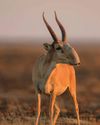
STEPPE CHANGE
Herds of saiga have returned to Kazakhstan, but there's a fine balance to tread

TREES FOR LIFE
Community is at the heart of conservation in the tropical forests of southern Belize
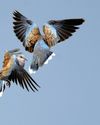
WHEN DOVES CRY
Turtle doves are now the UK's fastest declining bird species, but the RSPB is on a mission to save them

SURVIVAL OF THE CUTEST
We can't help being drawn to cute creatures, but our aesthetic preferences both help and hinder conservation

LIGHT ON THE NORTH
Spectacular images of Arctic foxes, reindeer and musk oxen reveal the wild beauty and diversity of Scandinavia
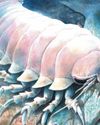
ROLLING IN THE DEEP
The super-sized crustacean that lives in the deepest, darkest ocean
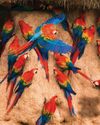
LET'S GET TOGETHER
Clay licks deep in the Amazon explode in a riot of colour, with macaws the stars of the show

FEMALE OF THE SPECIES
To sponge or not to sponge? That is the question for the bottlenose dolphins (Tursiops aduncus) living in Shark Bay, Western Australia.
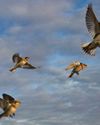
7 nature encounters for the month ahead
WITH NATURALIST AND AUTHOR BEN HOARE